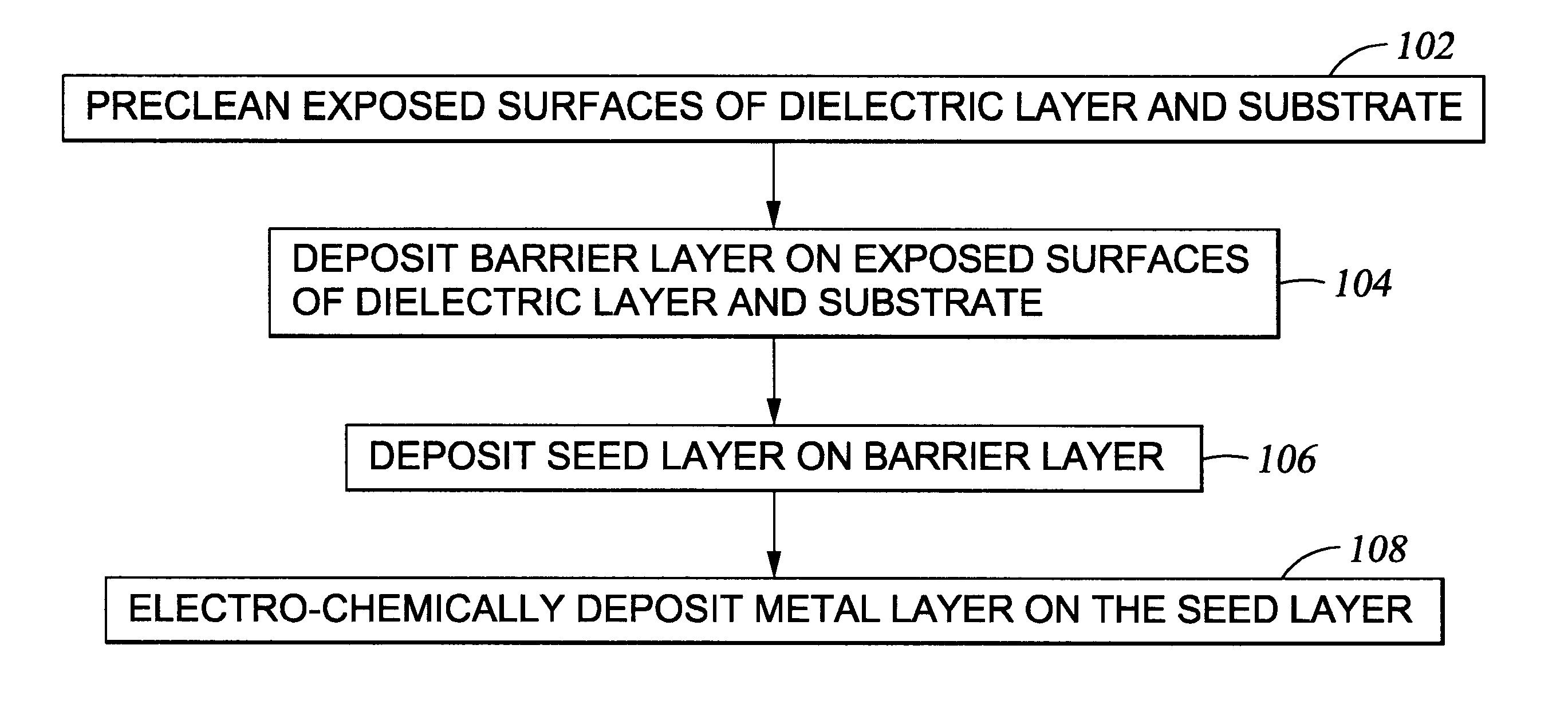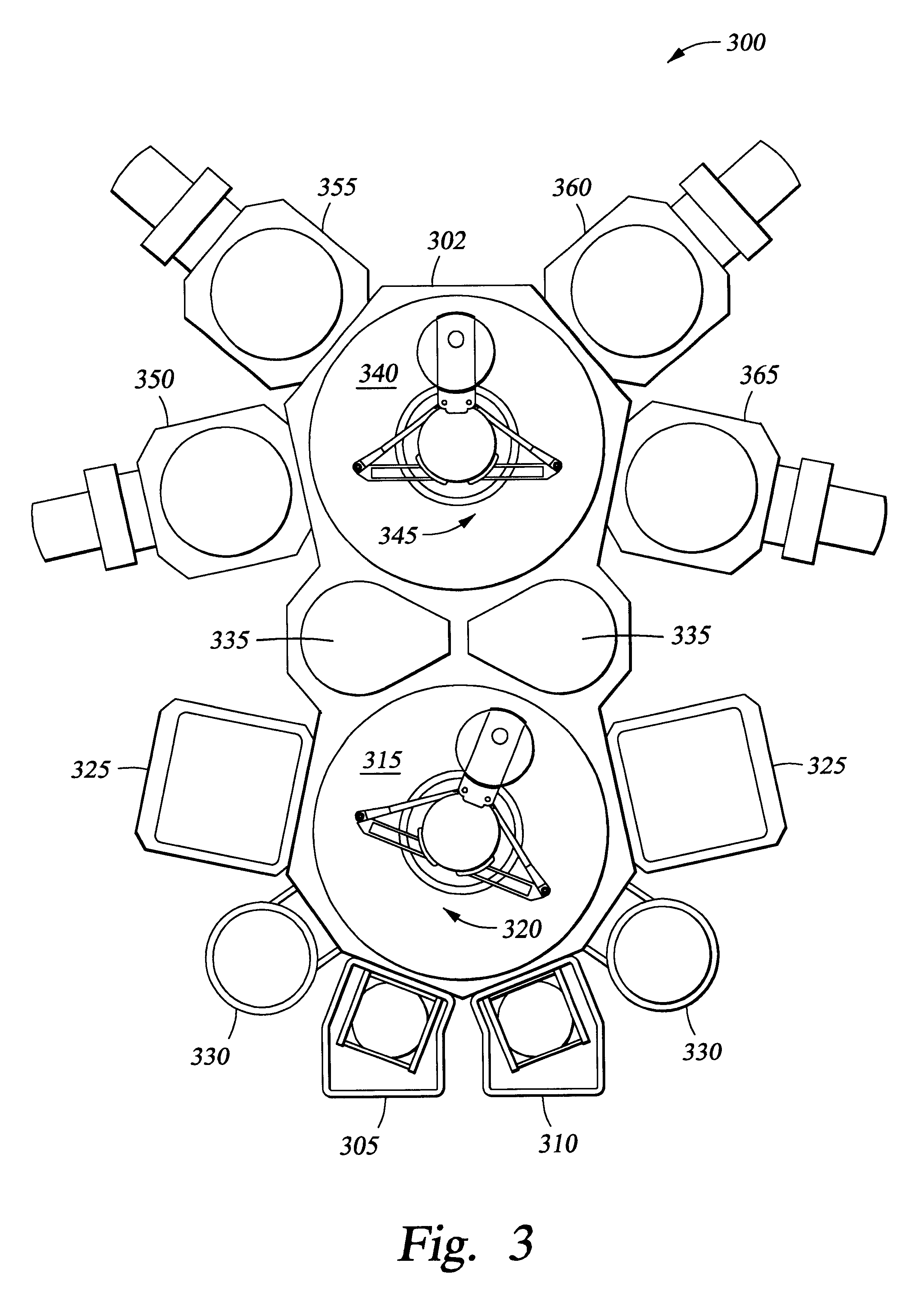Method for achieving copper fill of high aspect ratio interconnect features
a technology of interconnect features and copper filling, which is applied in the direction of superimposed coating processes, semiconductor devices, coatings, etc., can solve the problems of void-free sub-micron formation, many traditional deposition processes have difficulty filling structures or features having sub-micron width, and many ongoing efforts are directed at the formation of void-free sub-microns
- Summary
- Abstract
- Description
- Claims
- Application Information
AI Technical Summary
Problems solved by technology
Method used
Image
Examples
Embodiment Construction
The present invention provides a method for filling sub-micron features on a substrate comprising reactive pre-cleaning the substrate; depositing a barrier layer on the substrate using high density plasma physical vapor deposition; depositing a seed layer over the barrier layer using high density plasma physical vapor deposition; and electro-chemically depositing a metal using a highly resistive electrolyte and applying a first current density during a first deposition period followed by a second current density during a second period. The steps of depositing the barrier layer and depositing the seed layer are performed in a high density plasma chamber, and the electroplating process is performed in an electroplating cell.
To begin the pre-clean process, a substrate having sub-micron, high aspect ratio interconnect features is transferred into a pre-clean chamber. A pre-clean gas mixture comprising about 5% hydrogen and about 95% helium is introduced into the chamber, and the chamber...
PUM
| Property | Measurement | Unit |
|---|---|---|
| current density | aaaaa | aaaaa |
| current density | aaaaa | aaaaa |
| molar concentration | aaaaa | aaaaa |
Abstract
Description
Claims
Application Information
 Login to View More
Login to View More - R&D
- Intellectual Property
- Life Sciences
- Materials
- Tech Scout
- Unparalleled Data Quality
- Higher Quality Content
- 60% Fewer Hallucinations
Browse by: Latest US Patents, China's latest patents, Technical Efficacy Thesaurus, Application Domain, Technology Topic, Popular Technical Reports.
© 2025 PatSnap. All rights reserved.Legal|Privacy policy|Modern Slavery Act Transparency Statement|Sitemap|About US| Contact US: help@patsnap.com



